In the lively streets of Lima, the parallel worlds of traditional and indigenous markets come alive, offering a captivating glimpse into Peru’s vibrant culture.
From the historic Mercado Central to the bustling Mercado de Surquillo, these markets are a symphony of colors, smells, and sounds that ignite the senses.
But these markets are more than just places to buy goods; they serve as gateways to a rich heritage, preserving indigenous traditions and supporting local artisans.
As you step into this world of cultural treasures, you’ll find yourself surrounded by a tapestry of flavors, textiles, and handicrafts, beckoning you to explore further.
So, prepare to learn about the captivating world of Lima’s traditional and indigenous markets, where every corner holds a story waiting to be discovered.
Good To Know
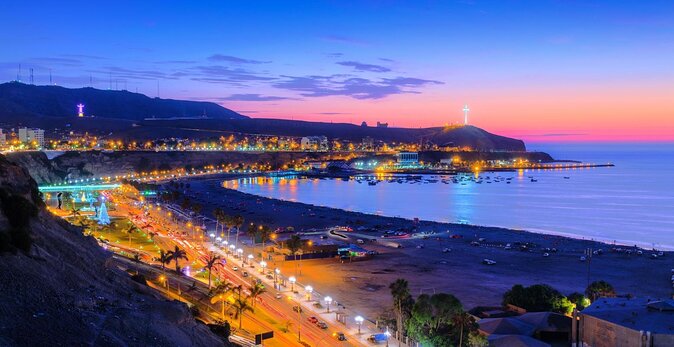
- Lima’s markets have a rich history and cultural significance, serving as a hub for traditions, customs, and flavors.
- These markets offer a wide variety of traditional foods, street food stalls, and small eateries with mouthwatering dishes.
- Famous markets in Lima, such as Mercado Central and Mercado Indio, provide unique glimpses into the local culture and offer a vibrant atmosphere.
- Bargaining is a common practice in Lima’s markets, and mastering shopping tips and respectful behavior is important for navigating the markets like a pro.
History of Lima’s Markets
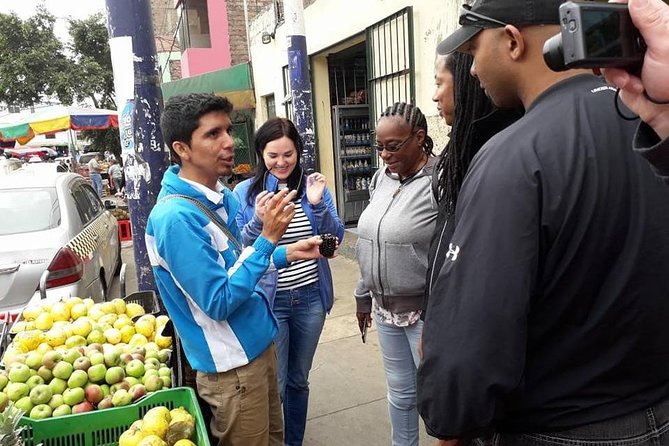
Lima’s markets have a rich and fascinating history, dating back centuries to when the city was first established. These vibrant marketplaces hold great cultural importance and have had a significant economic impact on the city throughout the years.
Lima’s markets have been gathering places for locals and travelers alike, offering a glimpse into the city’s diverse and vibrant culture.
From the traditional Mercado Central, with its bustling atmosphere and diverse array of products, to the Mercado de Surquillo, known for its fresh produce and local delicacies, each market has its own unique charm. These markets not only provide a space for commerce, but they also serve as a cultural hub, showcasing the traditions, customs, and flavors of Lima.
The economic impact of these markets can’t be overstated. They provide employment opportunities for local vendors and artisans, supporting the local economy. Plus, the markets attract travelers who are eager to explore and experience the vibrant atmosphere and unique products that can only be found in Lima’s markets.
Find more activities and experiences we've covered in Lima.
Cultural Significance of Indigenous Markets
With a deep-rooted history and a profound cultural impact, the indigenous markets of Lima have captivated both locals and travelers for centuries. These markets play a crucial role in cultural preservation, as they showcase the traditions, customs, and craftsmanship of Peru’s indigenous communities.
The vibrant colors, unique textiles, and traditional handicrafts found in these markets aren’t only a testament to the rich heritage of the country but also a means of preserving and promoting indigenous cultures.
On top of that, these markets have a significant economic impact on the communities they belong to. The sales generated from these markets provide a livelihood for many indigenous artisans and their families, helping to sustain their way of life and support local economies.
Traditional Market Foods and Products
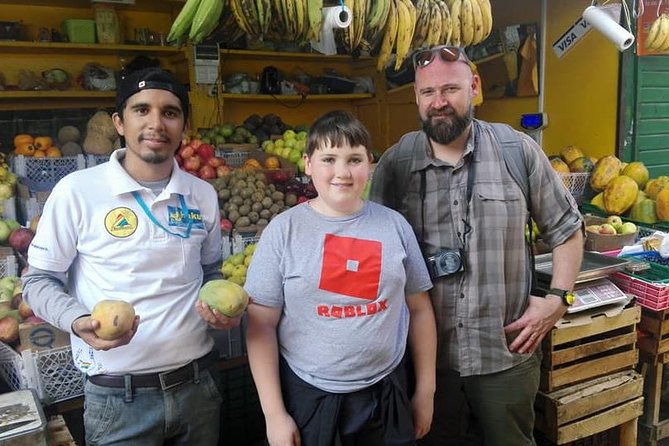
Visitors to the indigenous markets of Lima will be delighted by the abundance of traditional market foods and products on offer. These markets are a treasure trove of culinary delights and handcrafted goods that showcase the rich cultural heritage of the region.
Traditional market recipes, passed down through generations, can be found in the form of street food stalls and small eateries. Here, one can savor mouthwatering dishes like ceviche, anticuchos, and pachamanca, each bursting with flavors unique to Peru.
Plus, the markets are a haven for traditional market crafts, with vendors selling intricately woven textiles, pottery, and vibrant paintings. These products not only make for unique souvenirs but also serve as a testament to the skill and creativity of the local artisans.
Famous Markets in Lima
Nestled within the vibrant streets of Lima, a stack of famous markets await exploration by avid foodies and curious travelers alike. These bustling marketplaces offer a unique glimpse into the local culture and provide an opportunity to take in the vibrant atmosphere of Lima.
Here are four famous markets in Lima that are a must-visit:
Mercado Central: Known as the central market, this iconic destination is a paradise for food lovers. From fresh seafood to exotic fruits, you can find an array of culinary delights to tantalize your taste buds.
Mercado Indio: This market is a haven for those seeking traditional handicrafts. Here, you can browse through a wide selection of colorful textiles, intricate ceramics, and beautiful jewelry, all handmade by local artisans.
Mercado Surquillo: Located in the bohemian district of Surquillo, this market is a treasure trove of fresh produce. Wander through the vibrant stalls and sample the exotic fruits, aromatic spices, and fragrant flowers.
Mercado de Barranco: Situated in the trendy neighborhood of Barranco, this market offers a unique blend of traditional and modern. Explore the various stalls selling organic products, artisanal goods, and trendy fashion items.
With their vibrant atmosphere and diverse offerings, these famous markets in Lima aren’t to be missed. Enjoy the local culture, sample delicious food, and bring home unique souvenirs from these lively marketplaces.
Shopping Tips and Bargaining Techniques
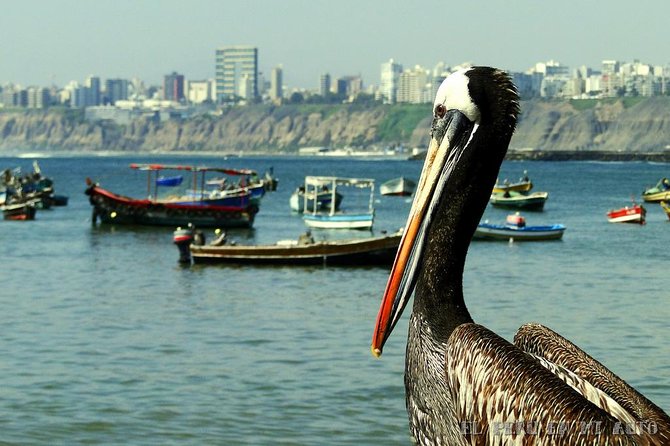
For those eager to explore the famous markets of Lima, mastering shopping tips and bargaining techniques is essential to make the most of your experience. Navigating these bustling markets can be overwhelming, but with a few insider tips, you’ll be able to navigate them like a pro.
First and foremost, it’s important to remember that bargaining is a common practice in Lima’s markets. It’s expected that you negotiate the price, so don’t be afraid to haggle. However, it’s also important to be respectful and polite during the bargaining process.
Start by asking for a lower price and be prepared to meet in the middle. Remember, it’s all part of the experience, so embrace the art of bargaining and enjoy the unique atmosphere of Lima’s markets.
- Lima History and Sightseeing Tour With San Francisco Monastery
- Lima Day Tour
- Miraflores, Barranco & San Isidro – Districts Tour (Small Group)
- The Malecon Bike Ride and El Morro Hill Hike From Lima
- Food History Local Markets Tour & Food Tasting
- Paracas, Ica and Huacachina With Buggies and Sandboard (From Lima)
Must-Visit Indigenous Markets in Lima
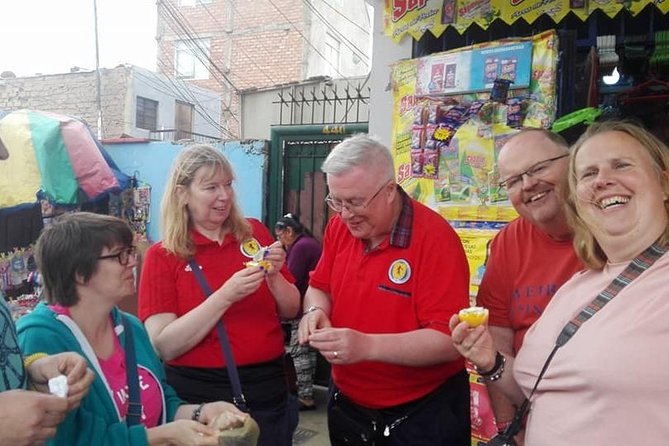
When exploring the vibrant city of Lima, don’t miss the opportunity to learn about the rich culture and traditions of the indigenous communities by visiting their vibrant markets. These indigenous markets offer a unique glimpse into the indigenous market culture of Lima, allowing visitors to experience the authentic flavors, colors, and traditions of the local communities.
Here are four must-visit indigenous markets in Lima:
Mercado de Surquillo: This bustling market is known for its fresh produce and local delicacies. Wander through the vibrant stalls and sample exotic fruits, traditional snacks, and homemade desserts.
Mercado de Magdalena: Located in the historic district of Magdalena del Mar, this market is a treasure trove of traditional crafts and handmade textiles. Browse through the stalls and find unique souvenirs to take home.
Mercado de San Isidro: This market is famous for its seafood, offering a wide variety of fresh fish, shellfish, and ceviche. Indulge in the flavors of the sea and experience the vibrant culinary scene of Lima.
Mercado Central: Located in the heart of Lima, this market is a hub of activity and a true reflection of the city’s diverse culture. From fresh produce to traditional handicrafts, this market has it all.
Visiting these indigenous markets in Lima isn’t just a shopping excursion, but a journey into the heart of indigenous culture. Enjoy the vibrant atmosphere, interact with the friendly locals, and create unforgettable memories of your unique market experiences.
Common Questions
Are the Markets in Lima Open Every Day?
Yes, the markets in Lima are open every day. The hours may vary, but they are usually busiest in the mornings when locals and travelers flock to buy fresh produce, handicrafts, and souvenirs.
Can I Use Credit Cards to Make Purchases at the Markets?
Yes, credit cards can be used to make purchases at the markets. However, it is important to consider the pros and cons of using cash versus credit.
Are the Prices Fixed or Can They Be Negotiated?
The prices at the markets can be negotiated as they are not fixed. Bargaining options are available to customers, allowing them to try and get a better deal on their purchases.
What Are Some Popular Souvenirs or Handicrafts That Can Be Found at the Markets?
Popular souvenirs and traditional handicrafts can be found at the markets in Lima. These indigenous crafts are a reflection of the vibrant culture of Peru. Visitors can explore the markets during their operating hours and purchase these unique items using various payment methods. Bargaining is a common practice, but it’s important to respect market etiquette and cultural norms.
Are There Any Specific Rules or Customs That Visitors Should Be Aware of When Visiting the Markets?
Visitors to Lima’s markets should be aware of the rules and customs, such as bargaining and respecting the vendors. It is important to engage in friendly negotiations and show appreciation for the local culture.
The Sum Up
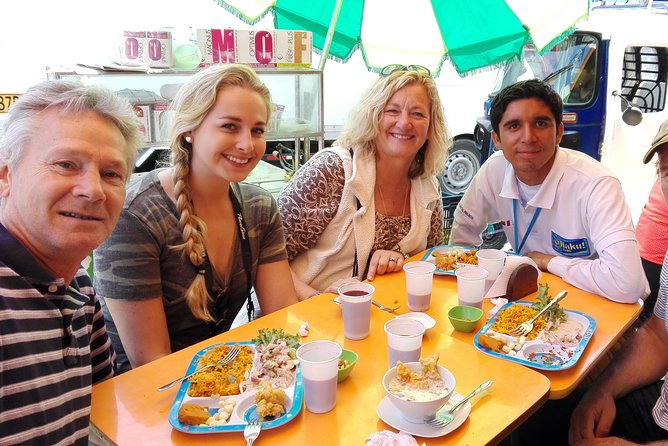
To sum it up, the traditional and indigenous markets of Lima offer a captivating glimpse into Peru’s rich heritage and cultural traditions.
From the vibrant colors of fruits and textiles to the bustling energy of the marketplaces, these markets are a feast for the senses.
They play a crucial role in preserving indigenous culture and supporting sustainable practices.
Whether you’re a food enthusiast, art lover, or simply curious about Lima’s cultural gems, these markets are a must-visit destination.
More Tour Reviews in Lima
- Shore Excursion: Shanty Town + Lunch + City Tour From Callao Port
- From Lima: Full Day Paracas by Bus
- Private Tour With Gastronomic Experience in Lima
- Half Day Gastronomy Tour: Surquillo Market + Pisco Sour and Ceviche + Miraflores
- Secrets of Miraflores: Huaca Pucllana and Chino Park – Half Day
- Pachacamac Sanctuary and Pyramids & the Bohemian District of Barranco. 2 In1!
Looking for something different? Other Lima activities we've written about
- 25 Best Workshops And Classes In Lima
- 25 Best Shopping Tours In Lima
- 20 Best Historical Tours In Lima
- 2 Best Motorbike And Scooter Rentals In Lima
- 25 Best Tours In Lima
- 5 Best 3 Day Tours In Lima
- 9 Best Boat Tours And Cruises In Lima
- 20 Best Private Driver Services In Lima
- 6 Best 3 Hour Tours and Experiences in Lima
- 20 Best Full-Day Tours In Lima
- 7 Best Photography Experiences In Lima
- 18 Best Airport Transfers In Lima
